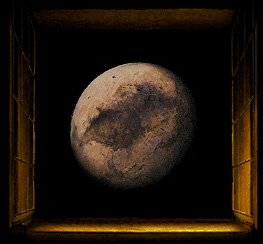

PLUTO (MYTHOLOGY) In Greek mythology, Pluto, or Pluton (also known as HADES), was a god both of death and of fertility or abundance. The name Pluto means "rich one," and the Romans derived Dis (from dives, "rich"), their god of the dead, from Pluto. Pluto helped his brothers ZEUS and POSEIDON depose their father, CRONUS, as the ruler of the universe, which they then divided among themselves. Pluto's realm, the house of Hades, is usually located beneath the earth, though sometimes in the west. CHARON (Mythology) In Greek mythology, Charon is the boatman who ferries the dead across the river STYX to HADES. Though old and gray, Charon is strong and sturdy. Dressed in a short cloak, he chooses his passengers from among the multitudes of the dead that crowd the shore. Only those properly buried in the world above are chosen, and then only if they have the fare--a silver coin placed in the mouth of the corpse before burial.
Pluto You played your game well- longing to remain the infant- hidden and cradled by distance. So drunken with success, you staggered. A small perturbation betrayed you, and, in that instant, a missing child was found. Charon Smallest one, you are not abandoned. Your Mother warms, protects- while your Father rides His chariot beyond the stars- still virile with Creation- still remembering- always- His countless children. carlyle miller
Pluto & Charon
PLUTO (PLANET) Pluto, the ninth PLANET from the Sun, is the smallest and most remote planet known in the SOLAR SYSTEM. The astronomer Percival Lowell, at his private observatory in Flagstaff, Ariz., instituted a search for another planet that eventually resulted in the discovery of Pluto by Clyde W. TOMBAUGH on Feb. 18, 1930. It was named for the PLUTO of mythology, the brother of Jupiter (Zeus) and Neptune (Poseidon). Orbit Pluto's average distance from the Sun is 5.9 billion km (3.66 billion mi, or 39.44 astronomical units), but because of a high orbital eccentricity (0.249), it comes as near as 4.42 billion km (2.75 billion mi) and travels as far as 7.40 billion km (4.60 billion mi) from the Sun. This unusual orbit brings Pluto inside the orbit of the planet Neptune during its close approach to the Sun, as, for example, during the current period between Jan. 23, 1979, and Mar. 15, 1999. The actual orbital paths do not cross, however. Pluto's orbit is inclined an unusually high 16 degrees to the ecliptic, or Earth-Sun orbital plane. The planet revolves around the Sun once every 248.4 years. In 1988 a computer simulation revealed that the orbit of Pluto is chaotic--that is, not completely predictable (see CHAOS THEORY). Physical Characteristics With a visual magnitude of 15.3, Pluto appears only as a faint point of light in even the largest telescopes. Through various types of studies, it was determined that Pluto may have a diameter of about 2,284 km (1,416 mi). The planet's very thin methane atmosphere may lie a few kilometers deep, however, making the diameter uncertain. The atmosphere apparently varies seasonally in thickness according to the planet's distance from the Sun. Spectroscopy indicates that Pluto's mantle of ices is covered at the surface with methane frost, which is redder toward the equator and bluer at the poles. Pluto's core--perhaps of silicate rock--may be relatively large, with a radius of nearly 885 km (550 mi). This would help to account for Pluto's apparent high density of about 2.1 g/cu cm (131 lb/cu ft). Satellite Charon, Pluto's grayish satellite, was discovered by American astrophysicist James W. Christy on June 22, 1978. Its average orbital path lies 19,000 km (11,800 mi) from the center of Pluto at an inclination of 55 deg to the ecliptic. It may have a trace atmosphere and is about 1,160 km (721 mi) wide. Charon completes one revolution in 6.39 days, the same as Pluto's rotation period. The two objects (Pluto and Charon) may be relics of the early days of the solar system. Bibliography: Asimov, Isaac, Pluto (1990); Beatty, J. Kelly, ed., The New Solar System, 3d ed. (1990); Binzel, R. P., "Pluto," Scientific American, June 1990; Henbest, Nigel, "Pluto," New Scientist, Apr. 29, 1989; Litman, Mark, Planets Beyond (1988); Tombaugh, Clyde W., and Moore, Patrick, Out of the Darkness: The Planet Pluto (1980).

